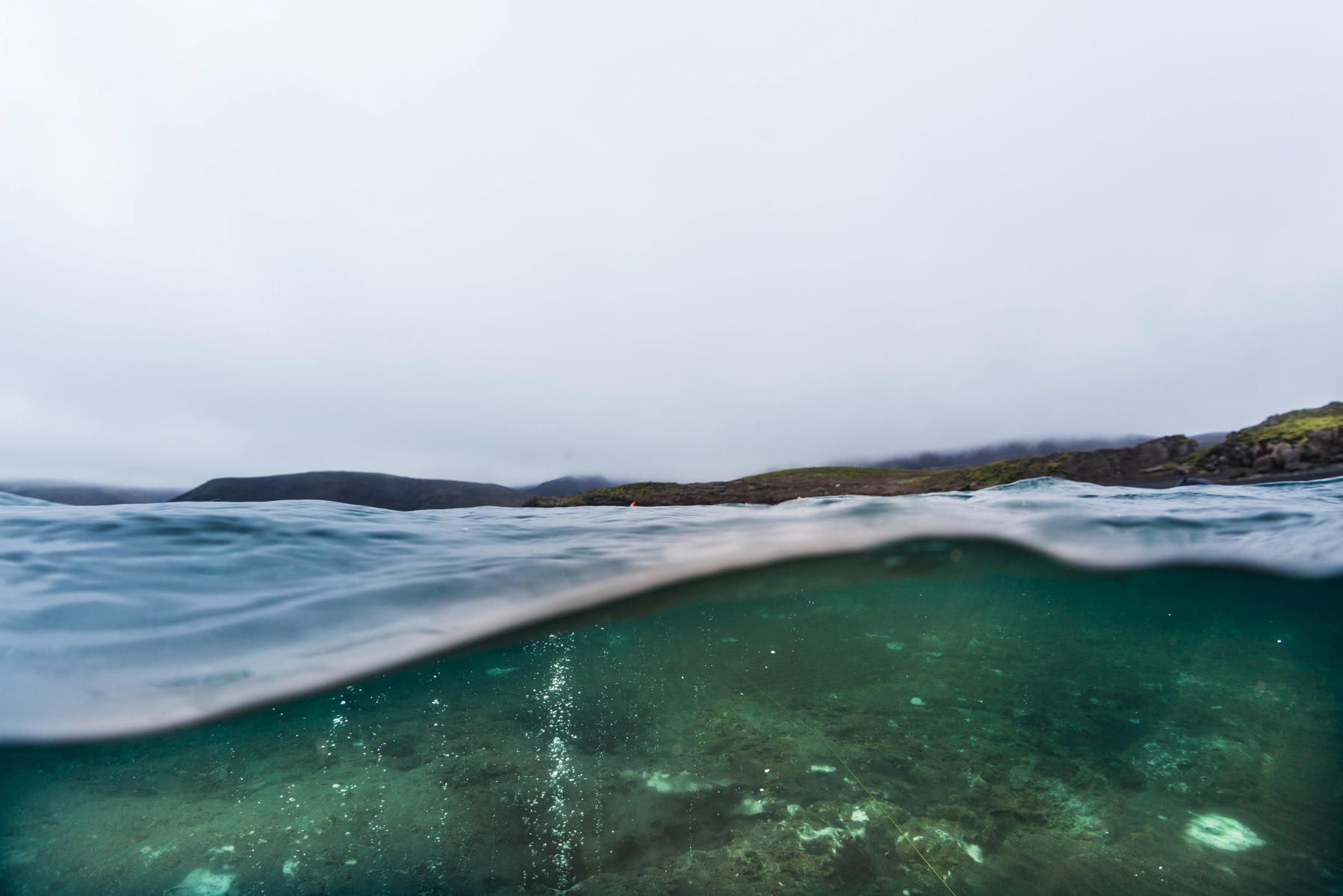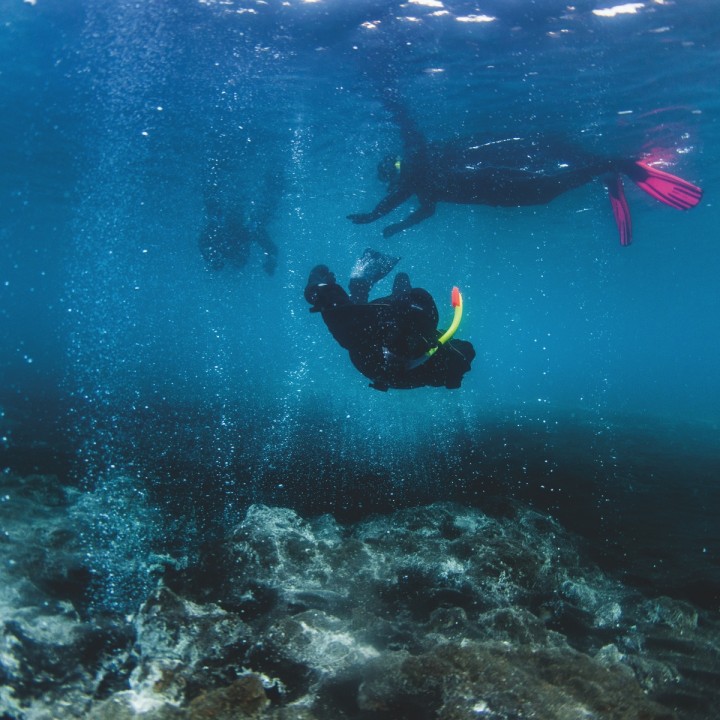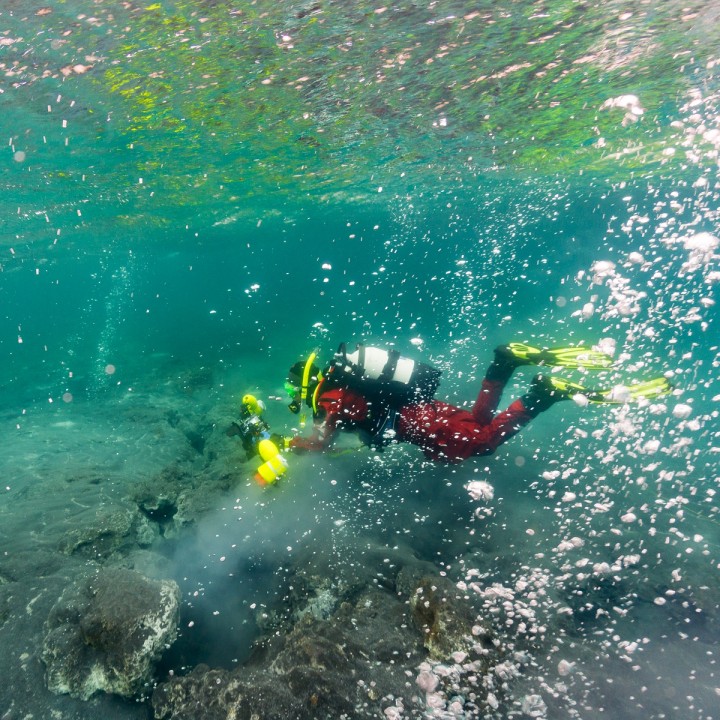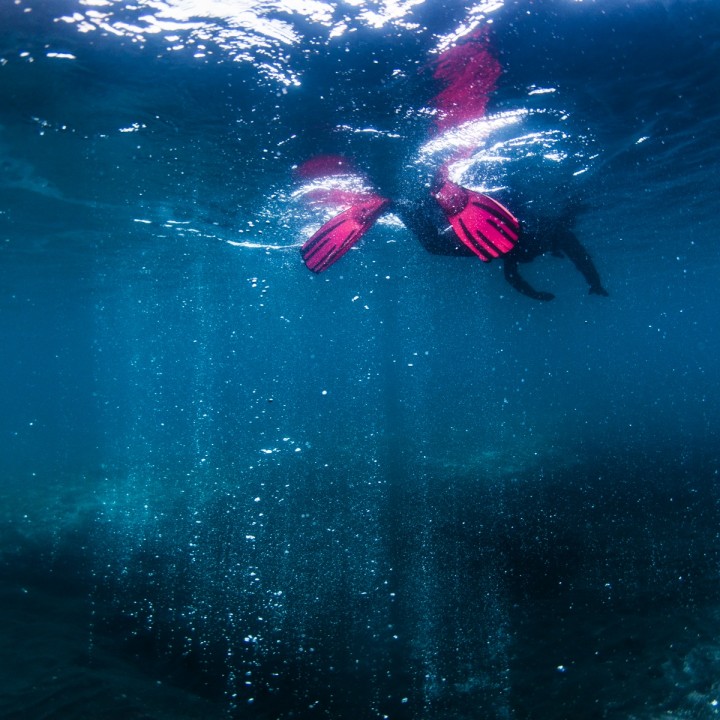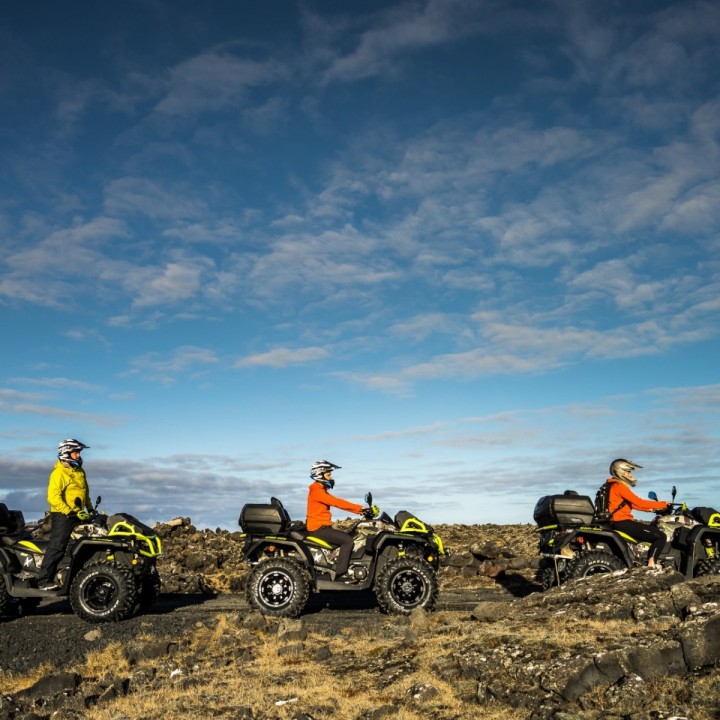A stunning and unique dive site
Covering about eight square kilometers, Kleifarvatn is the largest lake on the Reykjanes peninsula and with a maximum depth of 90 meters is one of the deepest lakes in Iceland. Kleifarvatn is located about 30 km outside of Reykjavík and sits directly atop the mid-Atlantic ridge, the point at which the North American and Eurasian continental plates diverge. Kleifarvatn Lake is nestled within an impressive volcanic landscape, full of steep and amazingly colored hills and weird lava formations. Standing at the lake’s shore it is hard to believe that there is a populated city just 30 minutes away. This is the territory of trolls and elves.
Lake Kleifarvatn’s position on the geothermally active area along the diverging tectonic plates provides some unusual features. Underwater hot springs were recently discovered about 10 meters from the shore on one side of the lake. In the center of the hot springs is a large crater that emits large quantities of warm water and gases. As the air bubbles are pushed through the crater on the lake floor, pressure causes the surrounding rocks to vibrate slightly. Divers can usually feel these vibrations themselves, which is a special experience!
Kleifarvatn lake is also unusual because of its constantly rising and falling water levels despite the fact that the lake has no visible surface drainage, i.e. no connecting rivers. Changes in water level are due mostly to alterations in ground water level. For instance, the water level in the lake noticeably decreased in 2000 as water drained into the ground following earthquakes that created a fissure in the lake’s floor. Since then the water levels have risen again, but they must be checked frequently in order to gauge access to the dive site.
Kliefarvatn Lake is a popular fishing site during the summer season and is known for unusually large brown trout and char. A monster the size of a whale and shape of a serpent is also said to inhabit the lake. As the lake partially freezes over during winter, both diving and fishing activities are paused during the winter season.
How to experience Kleifarvatn with us
Frequently asked questions
-
What is the weather in Iceland like?
-
During the summer months (June, July & August) it's sunny and warm(-ish) or overcast and wet, and often somewhere in between. The Icelandic weather famously changes at the drop of a woolly hat. So be prepared, bring your sun screen and shorts, as well as your all-weather gear. Even in the middle of summer the temperatures can get low (to below 10°C at night) so a good fleece - or better yet, Icelandic wool - will be essential, along with a hat and gloves.
-
-
When is the best time of year to visit Iceland?
-
Every time of year has its own benefits. It is least crowded in spring and autumn and you will often have a full range of activities available to you, but with less people than in summer, which is of course the busiest season here in Iceland. Winter has its own beauty and should not be dismissed, although it is not for the faint hearted as the weather can get quite extreme, and you would need to be flexible with your plans as tours can end up getting cancelled due to the weather. It is however the time for Northern Lights, so pros and cons as always. Please also be aware that winter lasts much later into the year than in most countries and there is often still snow in March and April. From a dive and snorkel point of view, it makes little difference which of the seasons you visit as our groups are small and the dive sites, visibility and marine life are pretty constant through out, varying more from day to day, than from season to season. The ocean temperatures are warmest, however, in summer and fall – about 8-12°C. For our other dive sites, such as our geothermal site and some of our other inland sites, are also warmest in summer and fall, although at a lower temperature, 6-8°C. Silfra however retains a constant temperature of 2-4°C.
-
Read more FAQ'S
